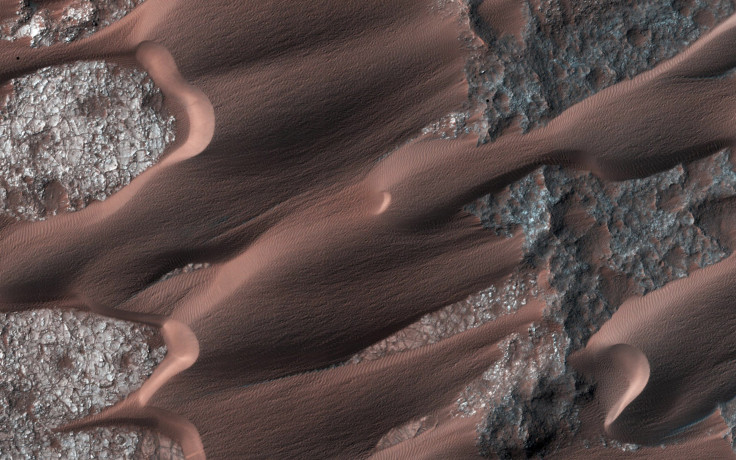Blue Skinny Fingers Found On The Surface of Mars

Rock remains in Mars have transformed into long and skinny structures after being blown by the wind. These finger-like formations are located in the Arsinoes Chaos in Mars, which is a frozen windswept desert.
The Arsinoes Chaos is a deep canyon system found in the southern part of the Martian equator near the far east of the Valles Marineris and measures about 4,000 kilometres long and seven kilometres deep. This giant canyon, which extends all the way up to the quarter of the planet, is theorised to form from a tectonic crack in the Martian crust that thickened some billion years ago.
Believed to be a huge rift valley, forces of water and wind subsequently widened the canyon system and formed a deep trough across the surface of Mars. Researchers theorise that the irregularities at the bottom of the canyon originated from the water channels carved in the area. The water was believed to have outflowed up north into the Martian northern lowland plains, which used to be the floor of an ancient ocean.
The transverse aeolian ridges, which are the grey sand dunes perpendicular to each other, are the structures that lie between the yardangs. The height of these ridges are half between the sand dune from saltating sand and ripples from spattered sand grains.
On January 4, the HiRISE camera on the NASA's Mars Reconnaissance Orbiter (MRO) spacecraft captured images of the ridges. MRO has been orbiting around Mars since March 2006 and after a two year initial mission, it has been extended for four times already. It has completed 40,000 orbit circles around Mars on February 7. MRO orbits Mars 12 times a day at an approximately 300-kilometres-altitude.
The primary mission of the MRO is to study the short-term and long-term changes on the surface of Mars. The investigators initially said that Mars is not what they initially thought, as the surface is diverse and dynamic.
To contact the writer, email rinadocto00@gmail.com





















